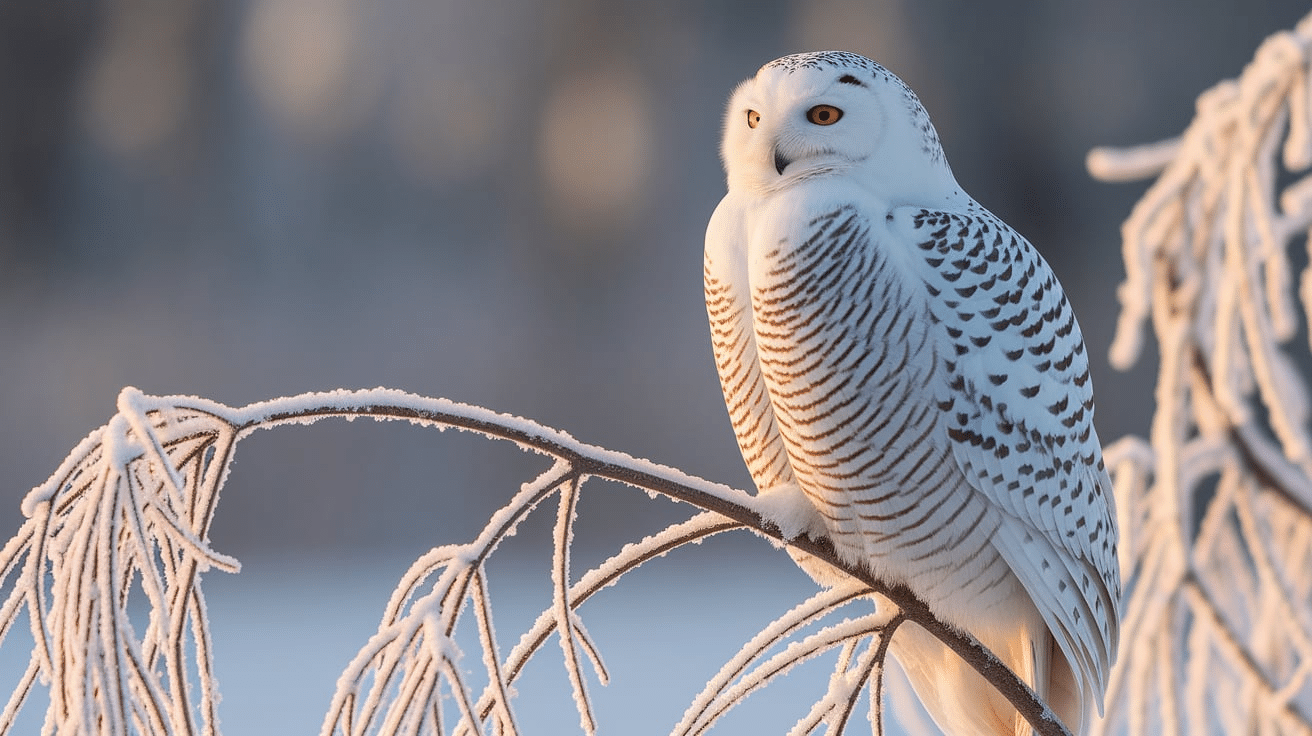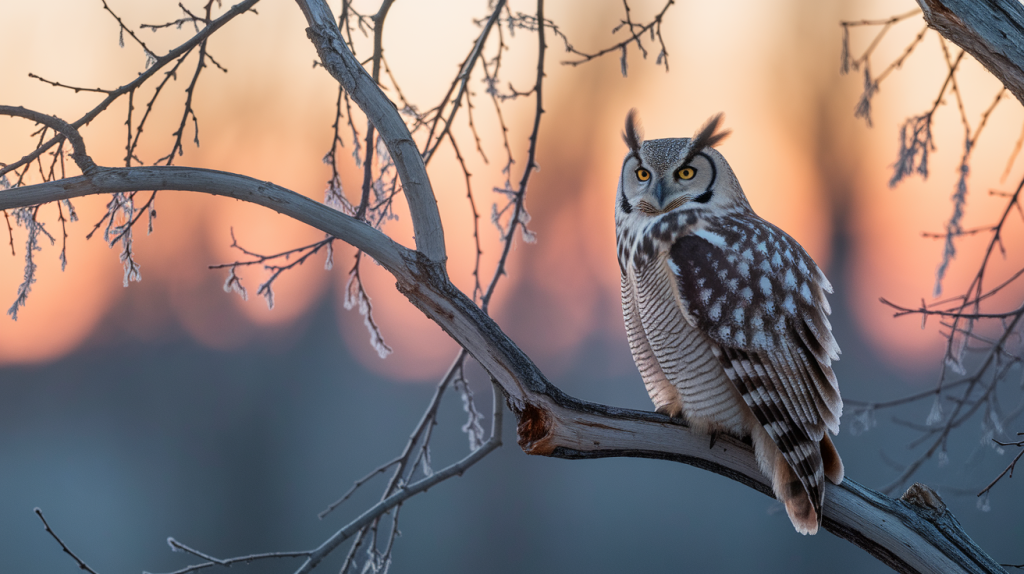Many people wonder about owls during cold winters. As temperatures drop and some animals enter long sleep periods, questions arise about these mysterious nocturnal birds.
What happens to owls when snow covers the ground and food becomes scarce? Do they follow the pattern of bears and groundhogs, or do they have different ways to handle the harsh winter months?
Well, owls possess unique features and behaviors that enable them to adapt to seasonal changes. Their winter survival methods are both interesting and practical.
This blog will examine how owls cope during winter, focusing on their physical traits, habitat choices, and feeding habits during the coldest time of year.
Do Owls Hibernate
Owls don’t go into a long winter sleep like some other animals do. They stay active throughout the year, even during the coldest months.
Unlike bears or squirrels, owls keep hunting and flying when snow blankets the ground. Their bodies don’t slow down or cool off for extended periods.
These nocturnal birds have changed natural adaptations that help them stay warm and find food in winter conditions. Their thick feathers work like built-in coats, trapping heat close to their bodies.
Food supply affects owl behavior more than temperature does. When prey becomes harder to find, owls might move to new areas.
This movement isn’t hibernation but rather a practical solution to food scarcity. Many owl species remain in their territories year-round, demonstrating that they don’t require hibernation to survive the winter challenges.
Physical Traits of Owls During Winters

Owls have several physical features that keep them comfortable during cold winters:
- Their feathers provide excellent insulation against freezing temperatures
- Outer feathers are firm and water-resistant
- The inner layer traps warm air next to their skin
- This double-layer system works better than many human-made winter clothes
Many owl species grow extra feathers for winter. The Great Grey Owl adds more fluff to its already thick coat. Their feet have special adaptations, and dense feathering extends down to their toes. This protects exposed parts from frostbite.
Blood circulation in owls helps maintain their body heat:
- Blood vessels are arranged to minimize heat loss through the extremities
- This smart system keeps warm blood in its core, where it matters most
Their eyes remain highly effective in the shorter daylight hours. Owls can see movement in very low light. This enables them to be successful hunters even during brief winter days and long nights.
Habitat Choices of Owls in Winters
Owls make smart choices about where they stay during the winter months. Different species handle the cold season in various ways:
- Some owls remain in the same area year-round
- Others move to locations with more food
- Few travel to slightly warmer regions, but not as far as migrating birds do
Forest owls often find shelter in dense evergreen trees. These trees block wind and keep snow from piling up directly on the birds. Hollow trees serve as cozy spots where owls can rest protected from harsh weather.
Barn owls are a structure-loving species that seek buildings, barns, and old sheds during winter. These spots offer protection from snow, rain, and cold winds. Such shelters can be several degrees warmer than the outside air.
Snowy owls actually move south from Arctic regions in winter. These owls prefer open fields and shorelines where they can spot prey easily, even with snow cover on the ground.
During very cold spells, they might roost lower in trees where it’s often warmer. This small change can make a big difference in their comfort level.
Feeding Habits of Owls During Winters
| Adaptation | Description |
|---|---|
| Hunting Method | Owls can hear prey moving under up to 10 inches of snow and use their excellent hearing to pinpoint the exact locations of small animals. |
| Diet Changes | Winter diets may shift from insects to larger prey, such as rodents or rabbits, when smaller food sources are scarce. |
| Food Storage | Some owls store extra food in tree hollows or other safe spots to use during severe weather when hunting is difficult. |
| Efficient Energy Use | Owls require fewer calories in winter; a medium-sized owl might eat just one or two mice per day to stay healthy. |
| Hunting Time | Owls may hunt more during daylight hours when temperatures are higher, thereby saving energy that would otherwise be used to stay warm. |
Conclusion
Owls make careful habitat choices, often staying in dense trees or structures that block harsh winds and provide shelter.
Their feeding habits adjust to winter conditions, with keen hearing that enables them to detect prey beneath the snow.
What does this mean for owl watchers? Winter offers good chances to spot these birds as they become more active during daylight hours.
Next time you walk through woods or fields on a winter day, look up at evergreen trees or check barn rafters.
You might spot an owl resting, waiting for its next hunting opportunity.















